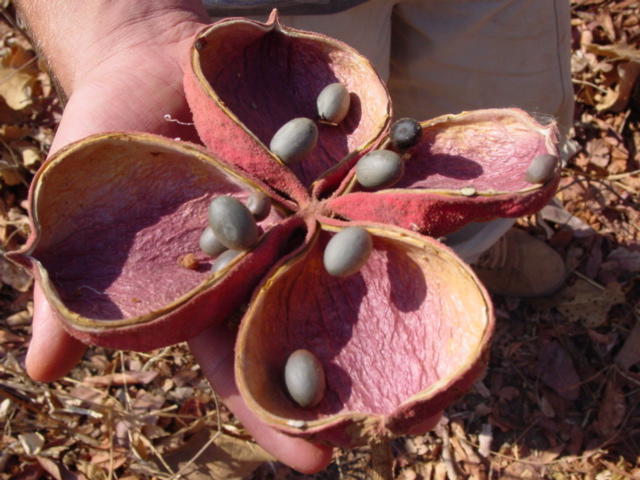Procuring biodiversity for schools as part of government plan to improve food and nutrition in Brazil

A report on the latest activities in Brazil from the Biodiversity for Food and Nutrition Initiative including a look at an innovative school feeding and procurement programme.
A report on the latest activities in Brazil from the Biodiversity for Food and Nutrition Initiative including a look at an innovative school feeding and procurement programme.
Brazil has high rates of malnutrition – for example, 1 in 3 children aged between 5 and 9 is overweight. It is one of the world’s hotspots for biodiversity, much of which is edible and nutritious, but many of these traditional species have fallen off household menus and out of consumer shopping baskets in favour of a narrow range of energy-dense staple crops.
As part of the GEF 'Biodiversity for Food and Nutrition' initiative, coordinated by Bioversity International, Brazil will use information generated by the project on nutrition-rich species to inform their food and nutrition security policies. A crucial gap in the knowledge base is the scientific information on the nutritional content of promising native food species. Through the initiative, the nutritional content of around 150 underutilized native food species is being investigated.
One of the main drivers of biodiversity loss in the context of biodiversity for food and nutrition is a lack of appreciation of its value by both producers and consumers. In Brazil, as in the other countries of the initiative, efforts are being made to raise awareness of its importance and to improve market links to ensure its uptake. The Government in Brazil has established a school feeding programme to promote healthy eating education, reconnecting nature with food for school children who are part of the programme. Investing in education is critical as these children are the future food producers, consumers and protectors of biodiversity.
The programme has added a critical food procurement component which ensures that 30% of produce is bought from small-scale producers. This is resulting in the empowerment of producers not only through this income stream, which also pays a premium of 30% on sustainably produced local foods, but through the creation of cooperatives which often include marginalized producers, such as indigenous communities. It also encourages diversified production on the farm which in turn increases resilience, for example to extreme weather events such as drought which can destroy an entire harvest of a single crop. At the moment, the diversity count is low in terms of species being purchased through the programme but this also means there is a great opportunity to monitor how increasing the diversity produced, purchased and consumed will in the longer-term improve nutrition and affect the livelihoods of the small-scale producers involved.
Other highlights from the initiative in 2014 include the book Diversifying Food and Diets - Using agricultural biodiversity to improve nutrition and health becoming available to download for free through the Bioversity International website. The book, part of the Issues in Agricultural Biodiversity Series published by Earthscan/Routledge in association with Bioversity International, explores the current state of knowledge on the role of agricultural biodiversity in improving nutrition and food security. It also identifies research and implementation gaps that need to be addressed to promote the better use of agricultural biodiversity in food-based approaches that tackle malnutrition and food security. The book was our most downloaded publication in 2014.
This project report has been adapted from a guest blog ‘Why agricultural biodiversity must be embedded into sustainable development policies ’by Braulio Ferreira de Souza Dias, Executive Secretary, Convention on Biological Diversity, for the International Day for Biological Diversity 2015.
Partners
The GEF 'Biodiversity for Food and Nutrition' initiative (full name 'Mainstreaming biodiversity for nutrition and health') is led by Brazil, Kenya, Sri Lanka and Turkey and coordinated by Bioversity International, with implementation support from the United Nations Environment Programme (UNEP) and the Food and Agriculture Organization of the United Nations (FAO) and additional support from the CGIAR Research Program on Agriculture for Nutrition and Health.
Photo: Sterculia, also known as tropical chestnut, Brazil. Credit: F.Tatagiba
This story is part of the 2014 Annual Report
